Humanity’s Quest to Conquer and Colonise the Red Planet
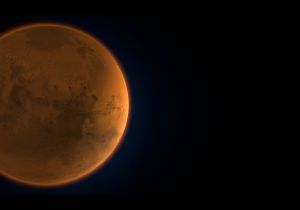
When US President Donald Trump’s nominee for NASA (National Aeronautics and Space Administration) Administrator Jared Isaacman, a billionaire entrepreneur who has privately funded his own journeys into space, sat for his US Senate confirmation hearing in early April, he outlined his vision for the future of US space exploration with a priority on sending American astronauts to Mars. Isaacman sketched out details of his masterplan to launch NASA astronauts to the Moon and Mars, and vowed to push forward the “greatest adventure in human history – the quest to discover the secrets of the universe.”
On the other side of the globe, China has also moved to advance its pioneering Mars sample return mission, due to launch in late 2028. The China National Space Administration (CNSA) published an announcement of opportunities in early March, officially opening the Tianwen-3 Mars mission to international cooperation. The Tianwen-3 mission aims to collect samples from Mars and, for the first time ever, deliver them to Earth. The primary scientific goal is the detection of potential biosignatures and find out whether life has ever existed on Mars.
At around the same time, SpaceX founder Elon Musk said that his Starship rocket will head to Mars by the end of 2026. He added that human landings could begin as early as 2029 if initial missions go well, though he conceded that “2031 was more likely.” Indeed, Starship – the largest rocket ever built – is crucial to Musk’s ambitions to colonise Mars. SpaceX was founded by Musk in 2002 with the expressed vision of decreasing the costs of space launches to pave the way to a sustainable colony on Mars.
For centuries, Mars has captured the human imagination. Once a distant celestial body shimmering in the night sky, it has evolved into the focal point of humanity’s most ambitious aspirations for space colonisation. The dream of settling on Mars has transitioned from speculative fiction to serious scientific discourse, as technological advancements inch us closer to the possibility of establishing a human presence on the Red Planet. However, despite remarkable progress, the challenges remain monumental. But first, how did we become so obsessed with the journey to Mars?
CURIOSITY ABOUT MARS
Our fascination with Mars stretches back thousands of years, long before the advent of telescopes or space travel. Ancient civilisations observed the bright red dot moving through the night sky and wove it into their mythologies. The Babylonians associated Mars with Nergal, their god of war and destruction, while the Greeks and Romans saw it as the embodiment of Ares and Mars, respectively their war deities, due to its blood-red hue.
Aboriginal cultures also noted its colour, describing it as something that has been burned in flames or linking it to Kogolongo, the native red-tailed black cockatoo. Other ancient cultures had a similarly keen fascination with Mars. The Egyptians referred to Mars as “Horus of the Horizon” and depicted him as a hawk-headed god, while the pre–Columbian Mayans carefully plotted the object’s position relative to the stars, tying its movements to shifting terrestrial seasons.
Scientific curiosity surrounding Mars intensified during the Renaissance, when advancements in optics and astronomy enabled a more precise study of the night sky. In 1609, Galileo Galilei turned one of the earliest telescopes toward Mars, observing its phases and noting its planetary nature. His telescopic observations were published in his work Sidereus Nuncius (The Starry Messenger) in 1610. Subsequent astronomers, such as Christiaan Huygens and Giovanni Cassini, observed the planet’s terrain and rotation, laying the groundwork for future Martian science.
By the 19th century, Mars had firmly captured the imagination of both scientists and the public. One of the most influential figures of the era was Italian astronomer Giovanni Schiaparelli, who in 1877 published maps of Mars that described a network of long, straight lines across the planet’s surface. He referred to them as canali – Italian for “channels” – which was mistakenly translated into English as “canals,” implying artificial structures. This linguistic misinterpretation triggered a wave of speculation that Mars was home to an advanced, water-managing civilisation.
American astronomer Percival Lowell became one of the most fervent proponents of this theory. In the early 20th century, he built the Lowell Observatory in Arizona specifically to study Mars and the possibility of intelligent life there, particularly the theory of Martian canals. In fact, Lowell published several books proposing that the planet’s “canals” were evidence of a dying civilisation trying to redistribute water from its polar ice caps. While Lowell’s theories were later disproven, they gripped the imagination of the public, and inspired a generation of thinkers and writers.
The idea of intelligent life on Mars gave rise to the popularisation of Martian fiction. While Mars was sporadically mentioned in science-fiction works between the 1600s to early 1800s, these instances were few and far between. The first work of science fiction set primarily on Mars was the 1880 novel Across the Zodiac by Percy Greg.
Among early Martian science fiction, H.G. Wells’ seminal 1898 novel The War of the Worlds is among the most popular. The novel adopts the first-person narrative of an unnamed protagonist who escapes from an aggressive Martian invasion of England, but the book really reflected Victorian anxieties about imperialism and technology. The War of the Worlds is one of the most commented-on works in the science fiction canon, and has never been out of print.
Edgar Rice Burroughs’s popular Barsoom series, featuring John Carter, is another popular work that has helped to popularise Martian science fiction. The series, which began publishing in the 1910s, portrayed Mars as a place of romantic adventure, featuring fantastical creatures and epic battles. It helped to popularise the idea that Mars was humanity’s neighbour not only in the cosmos, but in destiny.

In the movies, Mars was first depicted in A Trip to Mars, a short film by Edison Manufacturing Company, while Aelita, an influential 1924 Soviet science fiction silent film, also briefly showcased Mars as a setting. While a number of 1950s and 1960s films also featured Mars as their backdrop, Mars only became an especially popular setting for a number of science fiction blockbusters in the 1990s and 2000s. These latter films depicted a more accurate picture of Mars as a hostile, uninhabitable planet, including Arnold Schwarzenegger’s 1990 action hit Total Recall, which showed people living in sheltered colonies that protected them from the planet’s hostile environment and unbreathable air. In more recent times, one of the more memorable films set on Mars is the critically lauded The Martian (2015), about an astronaut (played by Matt Damon) stranded on Mars who has to learn how to survive on his own on the Red Planet with limited resources and technical difficulties, until rescue comes. The film gave a more grounded depiction of how humans may be able to survive and inhabit Mars.
SCIENTIFIC UNDERSTANDING
As telescopes improved in the early 20th century, the illusion of the existence of Martian civilisation began to fade. Detailed observations revealed no canals, no cities and no signs of life. In reality, Mars appeared to be a cold, desolate world. However, the idea of going to Mars still took root. Instead of imagining contact with Martians, humanity now aspired to inhabit Mars and become Martians themselves. This shift was mirrored in early space exploration thought. Visionaries like Russian scientist Konstantin Tsiolkovsky and American rocket pioneer Robert H. Goddard helped to lay down the theoretical foundations for space travel. Their work inspired a new generation of scientists who saw Mars not just as an object of study, but as a destination.
Perhaps the most significant early vision of Mars colonisation came from Wernher von Braun, one of the most important rocket developers and champions of space exploration in the twentieth century. The German-American rocket engineer was instrumental in developing the Saturn V rocket for NASA’s Apollo programme. In 1952, von Braun published The Mars Project, which presented a detailed plan for a crewed mission to Mars. His concept included a fleet of ten ships carrying seventy men, using orbital assembly and nitric acid/hydrazine propulsion – ideas far ahead of their time. His work, accompanied by lavish illustrations that captured the public’s imagination, lent an air of plausibility to what was still, at that point, a speculative endeavour.
By the time, the Space Age officially began with the launch of Sputnik 1 in 1957, Mars had already been established as a logical next step after the Moon. The Cold War-driven competition between the US and the Soviet Union sparked a flurry of space missions, though they initially focused on lunar exploration. Yet, Mars was never far from the conversation. The first generation of planetary scientists and aerospace engineers saw Mars as the ultimate proving ground for human ingenuity – a place that, unlike the Moon, held the tantalising possibility of habitability.
“For centuries, Mars has captured the human imagination. Once a distant celestial body shimmering in the night sky, it has evolved into the focal point of humanity’s most ambitious aspirations for space colonisation. The dream of settling on Mars has transitioned from speculative fiction to serious scientific discourse thanks to technological advancements.”
THE FIRST STEPS
The dream of reaching Mars took its first practical strides during the Cold War, when both America and the Soviet Union began attempting Mars missions in the early 1960s, though the Red Planet would prove a far more elusive and unforgiving target than Earth’s natural satellite.
The Soviet Union was first out of the gate. In 1960, it launched Marsnik 1 and Marsnik 2, which were the earliest attempts to send spacecraft toward Mars. Both missions failed to leave Earth’s orbit. Over the next several years, the Soviets would attempt more than a dozen robotic missions to Mars under the Mars and Zond programmes, many of which ended in failure due to the era’s still-maturing rocket and navigation technologies. Despite these setbacks, the Soviets eventually scored a partial success with Mars 3 in 1971, which became the first spacecraft to achieve a soft landing on the Martian surface. However, its lander ceased transmitting after only 14.5 seconds, likely due to a dust storm. It only managed to transmit a grey image with no details.
The US, after the success of its 1962 Mariner mission to Venus, began focusing on Mars. In 1965, Mariner 4 made history as the first spacecraft to successfully perform a flyby of the Red Planet. It sent back 21 grainy black-and white images that surprised many scientists. Instead of the expected smooth plains or even signs of civilisation that some had still hoped for, Mariner 4 revealed a heavily cratered, desolate landscape – a landscape that is eerily similar to the Moon. While this dampened hopes of discovering life on the planet, it confirmed Mars as a real, reachable world.
NASA continued its momentum with Mariner 6 and Mariner 7 – the first dual mission to Mars – in 1969, which conducted more flybys and captured hundreds of images. Then came Mariner 9 in 1971, which became the first spacecraft to orbit another planet. It arrived during a global Martian dust storm, rendering initial observations difficult. But once the storm subsided, Mariner 9 unveiled an astonishing diversity of landscapes: massive volcanoes like Olympus Mons – the largest volcano and tallest mountain in the Solar System, vast canyon systems such as Valles Marineris – the largest canyon in the Solar System, and dry riverbeds suggesting that liquid water once flowed on the Martian surface. These findings reawakened interest in the possibility that Mars may have been habitable in its ancient past.
Building on these successes, NASA launched the Viking programme in the mid-1970s – an ambitious endeavour involving twin orbiters and landers. Viking 1 and Viking 2 reached Mars in 1976, with their landers successfully touching down and beginning a sustained exploration of the surface. These missions were groundbreaking. They transmitted thousands of high-resolution images and conducted experiments to analyse Martian soil and search for biological activity.
One of the most intriguing aspects of the Viking mission was its life-detection experiment designed by three separate teams, under the direction of chief scientist Gerald Soffen of NASA. One of the experiments, the labelled release (LR) experiment, designed by Gilbert Levin, gave the most promise for exobiologists. In the LR experiment, a sample of Martian soil was inoculated with a drop of very dilute aqueous nutrient solution. The nutrients were tagged with radioactive 14C. The air above the soil was monitored for the evolution of radioactive 14CO2 (or other carbon based) gas as evidence that microorganisms in the soil had metabolised one or more of the nutrients.
When the experiment detected a chemical reaction in the soil that mimicked microbial metabolism, Levin and others believed that they had found evidence of life on Mars. However, most scientists attributed the reaction to nonbiological chemical processes, and debate over the results continues to this day. Regardless, the Viking missions represented a watershed moment in Martian exploration: the first extended stay on the surface of another planet.
After Viking, Mars exploration entered a lull. Budget constraints, shifting political priorities, and technical challenges caused a slowdown in interplanetary missions during the 1980s. The Soviets did send two probes Phobos 1 and 2 to Mars in 1988 to study Mars and its two moons, with a focus on Phobos. However, Phobos 1 lost contact on the way to Mars and Phobos 2, while successful in photographing Mars and Phobos, failed before it was set to release two landers to the surface of Phobos.
In the 1990s, Mars exploration was reignited with the advent of cheaper, smaller spacecraft. In end 1996, NASA launched Mars Pathfinder, a relatively low-cost mission that achieved significant public attention. It landed the Sojourner rover, the first wheeled vehicle to operate on another planet. Though tiny – about the size of a microwave oven – Sojourner proved that robotic mobility was feasible on the Martian surface, a vital capability for future exploration. Its panoramic images of a rocky desert landscape captured the imagination of millions and signalled a new era in planetary robotics.
Following this success, NASA initiated a series of increasingly sophisticated rover missions. The twin rovers Spirit and Opportunity, part of the Mars Exploration Rovers programme, landed in 2004 and exceeded all expectations. Designed for 90-day missions, Spirit operated until 2010 and Opportunity until 2018. These robotic geologists explored vast terrains, climbed hills, weathered dust storms, and sent back an unprecedented volume of data. Notably, Opportunity discovered mineral deposits that strongly suggested the past presence of liquid water – an essential ingredient for life.
Meanwhile, other orbiters such as the Mars Global Surveyor, Mars Odyssey and the European Space Agency’s (ESA) Mars Express also provided high-resolution mapping, subsurface scanning and atmospheric analysis. Altogether, these missions helped to identify areas of scientific interest and potential landing zones for future missions.
Then in 2012, the game changed again with the arrival of Curiosity, a nuclear-powered rover the size of a small SUV, launched under the Mars Science Laboratory mission. It landed in Gale Crater, where it conducted geological surveys, studied the atmosphere, and analysed samples using an onboard laboratory. One of the rover’s missions is to determine whether the selected field site inside Gale Crater has ever offered environmental conditions favourable for microbial life (including investigation of the role of water), and planetary habitability studies in preparation for human exploration. Curiosity’s most significant discovery was evidence that Gale Crater once hosted a long-standing mild water lake, further confirming that ancient Mars had the conditions necessary to support life. Curiosity remains operational and continues to deliver valuable scientific data to this day.
The march toward Mars colonisation received another boost in 2021 with the landing of Perseverance, NASA’s most advanced rover to date. It was the first mission specifically tasked with searching for signs of ancient microbial life and collecting rock samples for eventual return to Earth. It also carried a groundbreaking technology demonstrator: Ingenuity, a small helicopter that achieved the first powered flight on another planet – another historic milestone. Ingenuity was intended as a short-lived test, but it has exceeded expectations and performed flights across the Martian surface from 2021 to 2024.
In 2020, China launched their own Tianwen-1 mission the Wenchang Spacecraft Launch Site. After seven months of transit through the inner Solar System, the spacecraft entered Martian orbit in February 2021. For the next three months, the probe studied the target landing sites from a reconnaissance orbit. And then, on 14 May 2021, the lander/rover portion of the mission successfully touched down on Mars, making China the third nation to make a soft landing on Mars and establish communication from the Martian surface, after the Soviet Union and the US.
Together, these missions, spanning more than half a century, have done more than just study a distant planet. They have laid the groundwork scientifically, technologically and logistically for the possible eventual arrival of human explorers on Mars.
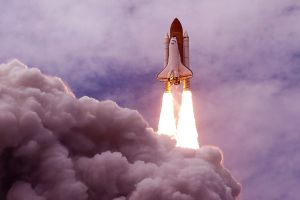
THE MODERN PUSH
If the 20th century laid the foundation for Mars exploration through the efforts of national space agencies, the 21st century has seen a fundamental paradigm shift – the rise and involvement of private enterprise. At the heart of this movement are two major forces: NASA, the veteran explorer, and SpaceX, the upstart disruptor.
For NASA, Mars has remained a long-term priority, albeit one approached with caution. Over the past two decades, the agency has steadily advanced its capabilities through a series of unmanned missions that build upon each other, leading toward the goal of sending humans to the Red Planet. The space agency’s roadmap is methodical and science-driven. It focuses on understanding Martian geology, searching for signs of past life, and developing the life-support and propulsion systems that will be required for human survival and travel.
A significant part of NASA’s Mars strategy has been the Mars Sample Return (MSR) campaign, a collaborative effort with the ESA. This multi-phase project aims to bring back samples collected by the Perseverance rover. These samples, carefully sealed in tubes, are intended to be retrieved by a future lander, launched into Martian orbit by a small rocket, and then captured by an orbiter for delivery back to Earth. If successful, this will mark the first time that material from another planet is returned for detailed study.
“In the 1990s, Mars exploration was reignited with the advent of cheaper, smaller spacecraft. In end 1996, NASA launched Mars Pathfinder, a relatively low-cost mission that achieved significant public attention. It landed the Sojourner rover, the first wheeled vehicle to operate on another planet. Though tiny – about the size of a microwave oven – Sojourner proved that robotic mobility was feasible on the Martian surface, a vital capability for future exploration.”
Simultaneously, NASA has been preparing for human missions to Mars by using the Moon as a stepping stone. The Artemis programme, which aims to return humans to the lunar surface and build a sustainable presence there, is seen as a testbed for technologies that will eventually support a crewed Mars mission. The development of the Space Launch System (SLS) and the Orion spacecraft, capable of deep space travel, are critical pieces of that puzzle.
Yet as NASA follows its steady trajectory, it has found an unlikely partner and competitor in SpaceX. Since its establishment in 2002, SpaceX’s rise has been meteoric, marked by a string of firsts: the first privately funded company to send a spacecraft to orbit, to dock with the International Space Station, and to land and reuse orbitalclass rockets.
Central to SpaceX’s Mars plan is the development of Starship, a fully reusable spacecraft designed for long duration interplanetary travel. Standing at over 120m tall when stacked with its Super Heavy booster, Starship is the most powerful rocket ever built, capable of lifting over 100 metric tons into low Earth orbit. What sets it apart is its reusability – both booster and spacecraft are intended to return to Earth, refuel and fly again. This dramatically reduces launch costs, a critical factor in the feasibility of Mars colonisation.
Starship is being designed with Mars in mind. It will be capable of carrying cargo, habitats, equipment and eventually, up to 100 passengers per trip. The vehicle is envisioned to launch from Earth, refuel in orbit and then make the months-long journey to Mars. Once there, it could land vertically on the Martian surface, unload its cargo and even serve as temporary housing.
While these plans may sound like science fiction, they are progressing in real time. SpaceX has already conducted several high-altitude test flights of Starship prototypes from its Starbase facility in Boca Chica, Texas. Though early tests ended in dramatic explosions, more recent flights have shown marked improvements. In 2023 and 2024, integrated flight tests demonstrated the vehicle’s ability to achieve orbital velocity, with successful stage separation and controlled descents.
Indeed, the interplay between NASA and SpaceX has evolved into a kind of symbiotic competition. NASA benefits from SpaceX’s rapid development cycles and lower costs, while SpaceX gains prestige and funding through government contracts. Notably, NASA selected Starship as the lunar lander for its Artemis III mission, a vote of confidence that helps to validate the system for future Martian missions, and recently added Starship to its official list for future launches.
Still, significant hurdles remain. Human spaceflight to Mars is a monumental challenge. The journey would take seven to ten months, expose astronauts to harmful cosmic radiation, and offer no easy return. Once on Mars, settlers would face a hostile environment: freezing temperatures, low atmospheric pressure, high radiation, and limited access to water and oxygen. Establishing a foothold would require building infrastructure from scratch – pressurised habitats, power generation systems, food production and medical facilities, all under extreme conditions.
Moreover, there are the psychological and social dimensions of long-duration space travel. How will humans cope with isolation, confinement and delayed communication with Earth? What happens in medical emergencies or interpersonal conflicts? These are questions that NASA is actively researching, including through simulations like the HI-SEAS (Hawaii Space Exploration Analogue and Simulation) missions in Hawaii and Mars analogue environments in Antarctica.
CHALLENGES OF COLONISING MARS
While the notion of colonising Mars is thrilling, the harsh realities of the endeavour are sobering. Colonising the Red Planet is not just about getting there; it is about surviving and thriving in one of the most inhospitable environments the human species has ever contemplated inhabiting. For all the rocket technology, bold timelines and conceptual habitat designs, the challenges that stand between Earth and a Martian colony are as immense as the planet’s dust storms.
One of the most daunting obstacles to Mars colonisation is cosmic radiation. Unlike Earth, which is protected by a strong magnetic field and a thick atmosphere that shields its inhabitants from high-energy particles from space, Mars is largely defenceless. Its thin atmosphere – less than 1% the density of Earth’s – and the lack of a global magnetic field expose the surface to constant bombardment by galactic cosmic rays and solar energetic particles. In fact, the danger begins in deep space en route to Mars. During the months-long journey, astronauts will be outside the Earth’s protective bubble, absorbing doses of radiation that could increase cancer risks, damage the central nervous system, and weaken the immune system.
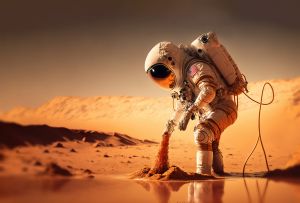
Assessment based on radiation measurement data reveals that the average daily dose rate of cosmic radiation on the Martian surface is approximately 0.67 mSv. Additionally, the average cosmic radiation dose during the journey to Mars is around 1.8 mSv per day—comparable to the annual dose from natural background radiation on Earth (~2 mSv). NASA’s Curiosity rover once measured the total radiation dose across three mission phases: the 180-day journey to Mars, a 500-day surface survey, and the 180-day return trip. The results showed that the total radiation dose across these phases was similar. However, the study did not account for potential radiological events in space, such as solar particle events, or variations in radiation levels on the Martian surface.
To address this, researchers are exploring multiple protective strategies such as building habitats underground; covering living spaces with regolith (Martian soil), water or hydrogen-rich composites; incorporating radiation-shielding materials into spacecraft and suits; using magnetic fields to deflect radiation, and even possibly bioengineering human cells to be more resistant to radiation. However, these solutions are in early stages, and none offer a complete fix yet. Besides these protective and adaptive strategies, behavioural choices are also necessary. These strategies include minimising time spent outside habitats during solar storms and seeking shelter when possible.
Another key issue to overcome is Mars’s temperature. Mars is not just cold – it can be brutally, consistently cold. Average surface temperatures hover around -60°C, and temperatures can vary greatly at different parts of the planet at different times of the day. They can reach highs of about 20°C near the equator during midday, and lows of -153°C at the poles. Any habitats on Mars would require robust insulation and heating systems to maintain liveable conditions, particularly during the planet’s long winters.
And then, there is the issue of atmosphere, or lack thereof. The air on Mars is composed mostly of carbon dioxide (95%), with traces of nitrogen, argon and oxygen. In other words, Mars’s atmosphere cannot support human life. Breathing unassisted is impossible. Pressurised habitats and reliable oxygen generation systems are non-negotiable. Technologies like MOXIE (Mars Oxygen In-Situ Resource Utilisation Experiment), tested on NASA’s Perseverance rover, are promising. MOXIE has successfully extracted oxygen from the Martian atmosphere, proving the feasibility of in-situ resource utilisation, but scaling such systems to support a human colony is a major engineering challenge still to come.
Adding to these problems is the ever-present Martian dust. Made of fine, electrostatically charged particles, this dust can be hazardous to both machinery and lungs. It has the potential to interfere with electronics, clog air filters, and damage seals on spacesuits and equipment. The famous “global dust storms,” some of which can engulf the entire planet for weeks, pose a further threat – reducing visibility, impairing solar power systems, and complicating surface operations.
Beyond the environmental issues, there are also profound psychological and social challenges to overcome. A journey to Mars and back could take two to three years, with the outbound trip alone lasting seven to ten months. During this time, astronauts will be confined in tight quarters, isolated from family and friends, and subjected to long delays in communication with Earth.
Once on Mars, colonists will face solitude unlike anything experienced on Earth. The terrain is bleak, the sky pinkish and alien, and there is no breeze, rain or natural greenery. Mental health support, autonomous decision-making, and a carefully selected social mix will be critical to prevent conflicts, depression and psychological breakdowns. NASA and other space agencies are currently conducting long-duration simulation missions, such as those at the HI-SEAS facility in Hawaii and the Mars Society’s analogue base in Utah, to better understand how people cope with extreme isolation.
Also, gravity on Mars is only about 38% that of Earth. While this might sound like fun, there are serious unknowns about its long-term impact on human physiology. Microgravity in space is known to cause muscle atrophy, bone loss and fluid redistribution. On the International Space Station, astronauts exercise for hours each day to combat these effects, but we do not yet know whether Martian gravity is sufficient to mitigate these effects over years. Would children born on Mars develop normally? Would returning colonists be able to readjust to Earth’s gravity? Would Mars settlers face chronic health issues due to the low-gravity environment? These are open questions with significant implications for long-term habitation.
Operationally, there are also logistical and economic barriers to overcome. Getting to Mars is expensive and landing on Mars is hard. But staying on Mars? That is the hardest feat of them all. A sustainable colony will need life support, energy sources, food production, medical care, communications infrastructure, construction materials and spare parts – most of which must initially be launched from Earth at tremendous cost.
Keep in mind that each launch window to Mars opens only once every 26 months, when Earth and Mars are optimally aligned to minimise travel time and fuel usage. This means that resupply missions will be few and far between. Emergencies cannot be quickly remedied by a rescue launch. Colonists will need to be almost entirely self-sufficient, and the infrastructure to support that level of autonomy does not yet exist.
Energy is another issue. Solar power is viable but less effective than on Earth due to the greater distance from the Sun and the aforementioned dust storms. Nuclear power – compact, reliable and long-lasting – might offer the best solution, but deploying and safely operating nuclear reactors on another planet raises a host of technical and political challenges.
As for cost, NASA’s conservative estimate for a crewed Mars mission is in the range of US$100 billion to US$500 billion. This is significantly more expensive than previous space missions like the Apollo or the Space Shuttle programme. SpaceX hopes to slash these costs dramatically with reusable rockets, but even Musk acknowledges that billions will be needed to make a self-sustaining colony viable. To date, no concrete funding model has been proposed for a Martian settlement. Will governments pay for it or will it be a public-private partnership? Could it be driven by tourism, mining or research? These remain speculative.
SCIENTIFIC BREAKTHROUGHS TO AID COLONISATION
In recent years, science and technology have brought Mars colonisation closer to tangible reality. A host of scientific breakthroughs are converging to transform the colonisation of Mars from a theoretical venture into a plausible long-term goal. From reusable rockets and artificial intelligence to resource extraction and habitat construction, these advances are laying the groundwork for a new era of interplanetary living.
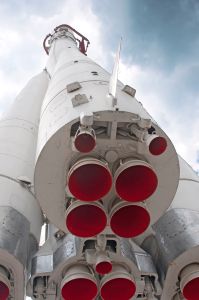
- REUSABLE ROCKETS
Perhaps the most consequential development in recent spaceflight history is the advent of reusable launch systems. Traditionally, rockets were single-use machines. They are hugely expensive to manufacture and discarded after each launch. That changed with companies like SpaceX pioneering vertical rocket landings and rapid refurbishment cycles. The Falcon 9 and Starship, both developed by SpaceX, can be reused multiple times, significantly reducing the cost per launch.
This innovation is critical for Mars colonisation. The sheer volume of cargo, equipment and personnel that must be transported to the Red Planet (and back) makes cost efficiency essential. Reusability does not just reduce the bill; it opens the door to a logistical cadence necessary for sustained operations, with frequent, predictable launch schedules and incremental deployment of infrastructure.
- IN-SITU RESOURCE UTILISATION (ISRU)
One of the most promising concepts for Mars colonisation is in-situ resource utilisation (ISRU) – the idea of using Martian materials to support human life, rather than relying entirely on expensive Earth shipments. This paradigm shift would reduce dependence on Earth and make the colony far more sustainable.
A landmark demonstration of ISRU is NASA’s MOXIE aboard the Perseverance rover. MOXIE extracts oxygen from carbon dioxide, which makes up 95% of the Martian atmosphere. In 2021, it successfully produced oxygen on Mars for the first time – a crucial step toward enabling future astronauts to breathe and, more importantly, to produce oxygen-based rocket fuel on the surface.
Further ISRU breakthroughs involve mining Martian regolith for water ice, which is present in large quantities on and below the surface in many regions. Extracting and purifying this ice would provide drinking water, enable hydroponic agriculture, and serve as the basis for fuel production through electrolysis (“power-to-gas”). Technologies that can harvest water autonomously and operate in freezing, dusty environments are being actively developed and tested in analogue settings on Earth.
- ADVANCED HABITATS AND LIFE SUPPORT SYSTEMS
A Mars colony cannot depend on Earth for air, water, food or even temperature regulation. Thus, research into self-sustaining habitats is critical. Space agencies and private companies are working on habitat modules that can support human life for months or even years at a time. These habitats must be pressurised, shielded from radiation, thermally controlled and highly energy efficient. They must have closed-loop environmental control systems that recycle air, purify water and minimise waste – all essential features for life on Mars, where resupply is virtually impossible.
Innovations in 3D printing are also showing promise. NASA has explored the concept of using Martian soil – mixed with a polymer or sintered via lasers – to construct shelters. In 2019, the agency held and completed the 3D-Printed Habitat Challenge to solicit viable concepts for autonomous habitat construction on Mars. There were five levels of competition – three construction levels and two virtual levels. For the virtual levels, teams used Building Information Modelling software to design a habitat that combined allowances for both the structure and systems it must contain. The construction levels challenged the teams to autonomously 3D-print elements of the habitat, culminating with a one-third-scale printed habitat for the final level.
- AI AND ROBOTICS
No Mars colony will survive without a robust network of intelligent, autonomous systems. The time delay in communication with Earth – ranging from 3 to 21 minutes one way – makes real-time remote control unfeasible. Therefore, robots and AI must be able to make decisions, perform maintenance, conduct construction and respond to emergencies with minimal human input.
Fortunately, robotics has seen explosive growth. From Boston Dynamics’ agile robots to NASA’s semiautonomous Perseverance rover, we are entering an era where robots can traverse rough terrain, manipulate tools, and even collaborate in swarms. AI will also be essential in managing life support, predicting equipment failures and optimising energy use.
SpaceX has suggested that robotic cargo missions will precede human arrival on Mars, carrying everything from habitats to solar panels to scientific instruments. These machines will not only prepare the environment but also test systems that humans will rely on. In fact, Musk has suggested that Tesla’s Optimus humanoid robot will head to Mars in 2026 as a precursor to future human landings.
- NUCLEAR ENERGY
Sustainable energy on Mars remains a complex challenge. While solar power is abundant, it is less effective than on Earth due to the planet’s greater distance from the Sun and the periodic global dust storms that can last for weeks. Nuclear energy offers a more stable and high-output solution.
NASA’s Kilopower project is developing small, portable nuclear fission reactors that could power a Mars outpost. These systems are designed to run continuously for years, and operate regardless of sunlight or weather. A single Kilopower reactor could generate enough electricity to support multiple crew members, power equipment and charge life-support systems around the clock. Deploying nuclear power comes with logistical and safety considerations, but it may ultimately prove indispensable for Martian settlements, particularly in polar regions or during extended dust storms when solar energy is unreliable.
- SYNTHETIC BIOLOGY AND SPACE FARMING
Sourcing food from Earth is impractical for a colony expected to grow and survive for years. The solution lies in sustainable agriculture and synthetic biology – fields that have made significant strides in recent years.
Hydroponics and aeroponics, methods of growing plants without soil using nutrient-rich water or mist, are likely to play a major role. Researchers are developing compact, automated farming modules that can grow vegetables, grains and even fruit in confined, controlled environments.
Beyond traditional farming, synthetic biology could allow settlers to grow food, medicines and materials using engineered microbes. Some biotech companies are exploring organisms that can produce plastic, biofuels or even bricks from Martian resources. Genetically modified algae or yeast might be able to serve as versatile, protein rich food sources or help terraform enclosed habitats by recycling carbon dioxide into oxygen.
A new ESA project is assessing the viability of growing so called laboratory-grown food in low gravity and higher radiation in orbit and on other worlds. ESA is funding the research to explore new ways of reducing the cost of feeding an astronaut, which can cost up to £20,000 per day. The experiment is a first step to developing a small pilot food production plant on the International Space Station in two years’ time. Laboratory-grown food is likely to be essential if the objective of making humanity a multi-planetary species is to be realised.
- MEDICAL ADVANCES AND REMOTE HEALTHCARE
Healthcare on Mars will need to be both proactive and autonomous. Medical emergencies, radiation exposure and unknown health risks in low gravity all require solutions far beyond today’s Earth-bound hospitals. Fortunately, advances in telemedicine, diagnostic AI and compact medical devices are making remote healthcare more viable.
Medical tricorders – portable devices capable of diagnosing conditions via sensors and software – are already being prototyped. 3D bioprinting could eventually allow Mars settlers to print skin grafts or even organ tissues using their own cells. Just last year, the Singapore Centre for 3D Printing (SC3DP) at Nanyang Technological University (NTU) did a number of animal tests which found that 3D-printed cells from the centre were able to regenerate into new bones, paving the way for use in humans in the future.
Furthermore, AI-based diagnostic tools could guide non-doctors through complex procedures, while robotic surgical assistants may handle more delicate interventions. In parallel, pharmaceutical companies are investigating how to manufacture drugs in space, ensuring a constant and reliable supply of medications even when resupply missions are years or months away.
HOW REALISTIC IS MARS COLONISATION?
Colonising Mars has become one of the most talked about and hotly debated goals of 21st-century science and space exploration. With billionaires championing interplanetary travel, Hollywood dramatising off-world survival, and global space agencies drawing up long-term roadmaps to the Red Planet, the idea has never felt more tangible. But how realistic is the dream of establishing a human settlement on Mars? The answer lies somewhere between the raw optimism of visionaries and the cautious pragmatism of scientists. At its core, Mars colonisation is not impossible. Technologically, humanity is closer than ever to sending humans to the Red Planet. The engineering feats demonstrated by SpaceX, NASA, and other international players suggest that landing humans on Mars within the next two decades is an achievable goal. The Artemis programme, which aims to return humans to the Moon and build a sustained presence there, is seen by many as a stepping stone to Mars settlement. Meanwhile, SpaceX’s Starship is central to Elon Musk’s vision of building a self-sustaining Martian city by the end of this century.
Yet, achieving a crewed landing is only the beginning. The leap from exploration to colonisation is vast. A realistic Mars settlement must be more than a series of science missions strung together; it must function as a habitable, autonomous and resilient ecosystem, capable of supporting human life for months or years at a time. And for that, many scientific, medical, political and philosophical hurdles still stand in the way.
Despite the challenges, there is a powerful argument to be made for attempting to colonise Mars. Some see it as a moral imperative – a way to safeguard the human species against existential threats like nuclear war, pandemics or planetary disasters. Others view it as a natural extension of humanity’s exploratory spirit, akin to crossing oceans to discover new continents or climbing Everest. And then there are those who believe that reaching for Mars will yield innovations that benefit Earth: cleaner energy systems, new materials, closed-loop life support technologies, and deeper understandings of biology and physics.
At the end of the day, Mars is no utopia waiting to be claimed. It is a dead, cold and dangerous place. But for all its hostility, it is also a canvas for one of humanity’s greatest adventures. It is a second chance to imagine civilisation anew. Whether that vision becomes reality will depend not only on rockets and robots, but on our collective resolve to go further than we have ever gone before. PRIME
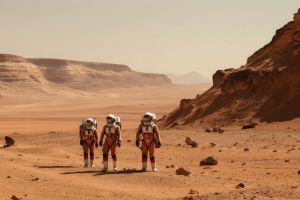
“One of the most daunting obstacles to Mars colonisation is cosmic radiation. Unlike Earth, which is protected by a strong magnetic field and a thick atmosphere that shields its inhabitants from high-energy particles from space, Mars is largely defenceless. Its thin atmosphere – less than 1% the density of Earth’s – and the lack of a global magnetic field expose the surface to constant bombardment by galactic cosmic rays and solar energetic particles.”












Leave A Comment